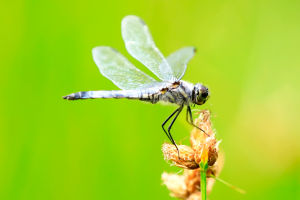Gentoo Penguins, known scientifically as Pygoscelis papua, are fascinating creatures that inhabit the icy regions of the Southern Hemisphere.
With their distinctive white stripe across the head, bright orange beak, and playful demeanor, these penguins are easily recognizable and loved by wildlife enthusiasts.
Gentoos are the fastest swimming penguins, reaching speeds up to 36 km/h (22 mph), making them true speedsters of the sea. So Lykkers! Let’s dive into the captivating world of Gentoo Penguins and discover what makes them so unique!
Habitat and Distribution
Gentoo Penguins are primarily found on sub-Antarctic islands and the Antarctic Peninsula. Their colonies are spread across a range of locations, including the Falkland Islands, South Georgia, Kerguelen Islands, and the South Shetland Islands. They prefer ice-free areas for nesting, such as beaches, coastal plains, or cliffs, where they can easily access the ocean for feeding.
Physical Characteristics
Gentoo Penguins are medium-sized penguins, with adults standing about 75 to 90 cm (30 to 35 inches) tall and weighing between 4.5 to 8.5 kg (10 to 19 lbs). Their most distinguishing feature is the white stripe or “bonnet” that extends from eye to eye across the top of their heads. They have bright orange-red beaks and webbed feet, which contrast with their sleek black and white plumage.
Diet and Hunting Skills
Gentoos have a diverse diet that mainly consists of small fish, krill, and squid. They are agile swimmers and expert divers, often plunging to depths of 200 meters (656 feet) to hunt for food. Their streamlined bodies and powerful flippers make them incredibly efficient in the water, allowing them to catch prey with remarkable speed and precision.
Breeding and Nesting Habits
Gentoo Penguins are monogamous and often return to the same mate each breeding season. They typically breed from September to December, building nests out of stones and pebbles. These nests provide protection from harsh weather and keep their eggs safe from predators. The female usually lays two eggs, which both parents take turns incubating for about 34 to 37 days. After hatching, the chicks are cared for by both parents until they are ready to fledge and venture into the sea.
Behavior and Social Life
Gentoos are known for their playful and curious nature. They are social animals that live in large colonies, where they engage in various activities like preening, vocalizing, and "porpoising"—a technique where they leap in and out of the water while swimming, resembling dolphins. This behavior is thought to help them breathe, avoid predators, and maintain high speeds while swimming.
Challenges and Conservation Status
Although Gentoo Penguins are not currently endangered, they are listed as "Near Threatened" on the IUCN Red List due to threats such as climate change, overfishing, and habitat disturbance. Changes in sea ice patterns and increased human activities in their habitats could impact their breeding success and food availability. Conservation efforts are focused on monitoring populations, protecting breeding sites, and managing fisheries to ensure sustainable food resources for these charismatic birds.
Interesting Facts About Gentoo Penguins
Fastest Swimmers: Gentoos hold the title of the fastest swimming penguin species, reaching speeds of up to 36 km/h (22 mph).
Unique Calls: They have a unique braying call that helps them identify each other within large colonies.
Pebble Gift-Giving: Gentoo Penguins are known for their pebble-giving behavior, where males present pebbles to females as part of their courtship ritual.
Strong Parental Bonds: Both parents share the responsibility of incubating eggs and feeding their chicks, showcasing strong parental cooperation.
Gentoo Penguins are remarkable creatures with distinctive features and behaviors that make them stand out among their penguin cousins. As they continue to face environmental challenges, it’s essential to raise awareness about their conservation needs to ensure that these playful speedsters thrive in their icy habitats for generations to come.
Gentoo Penguin. Pygoscelis papua. Antarctic Peninsula
Video By NatureFootage


